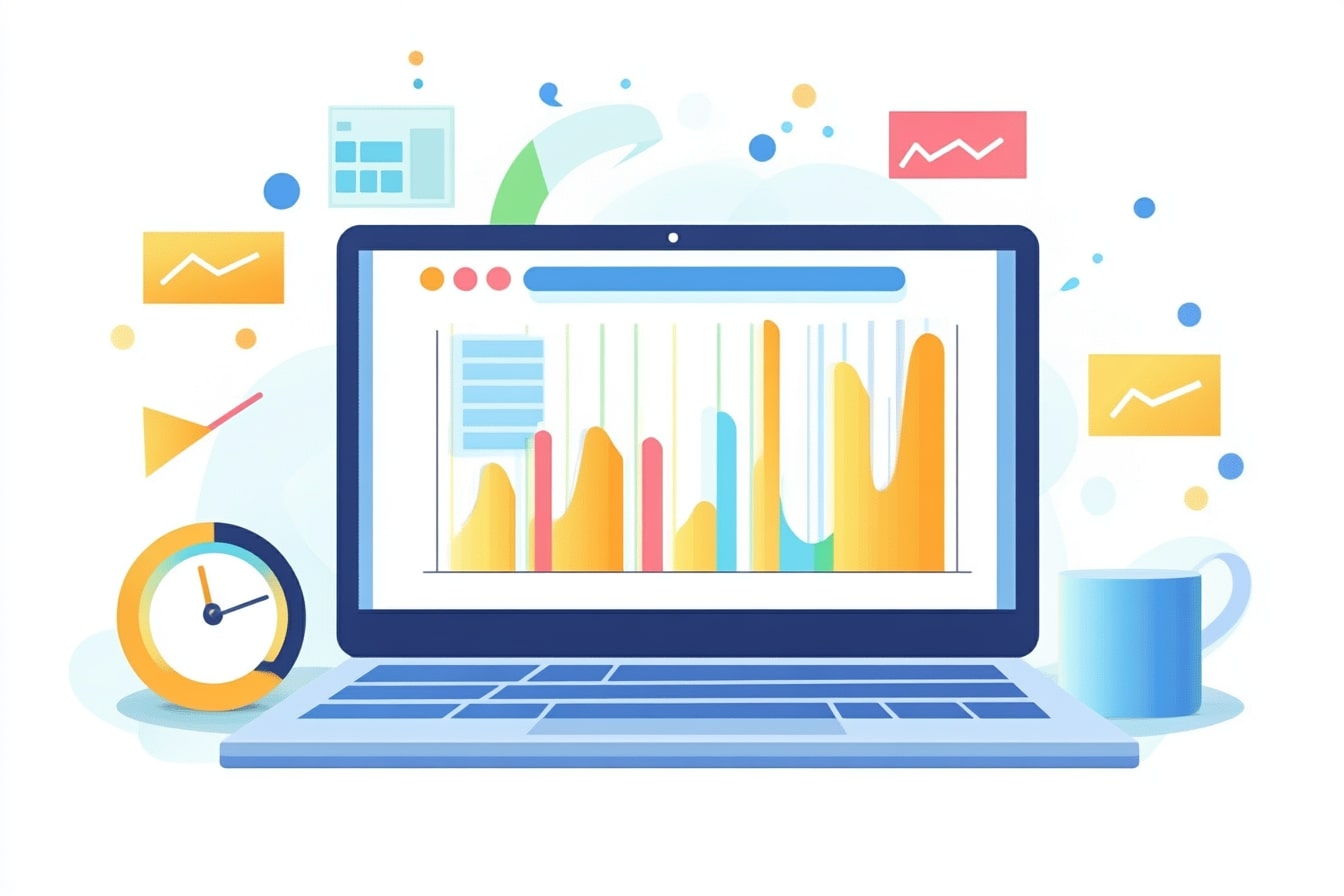Unlocking the Power of Data Analytics: A Comprehensive Guide
In today's data-driven world, organizations are increasingly turning to data analytics to gain a competitive edge and make informed decisions. Data analytics provides valuable insights for strategic decision-making, allowing businesses to leverage their information assets effectively. This article explores the key aspects of data analytics, its applications, and how it can transform the way organizations operate.

How does data analytics provide insights for strategic decision-making?
Data analytics is a powerful tool that enables organizations to extract meaningful insights from vast amounts of data. By analyzing historical and real-time information, businesses can identify trends, patterns, and correlations that may not be immediately apparent. These insights can inform strategic decisions across various domains, including marketing, finance, operations, and customer service.
For example, a retail company might use data analytics to analyze customer purchase history, browsing behavior, and demographic information. This analysis could reveal which products are most popular among specific customer segments, allowing the company to tailor its marketing strategies and inventory management accordingly. By basing decisions on data-driven insights rather than intuition alone, organizations can reduce risks and improve their overall performance.
What advanced analytical tools can identify hidden patterns and trends?
Advanced analytical tools play a crucial role in uncovering hidden patterns and trends within complex datasets. These tools employ sophisticated algorithms and statistical techniques to process and analyze large volumes of information quickly and accurately. Some of the most powerful tools in the data analyst’s toolkit include:
-
Machine Learning Algorithms: These algorithms can automatically identify patterns and relationships in data, adapting and improving their performance over time.
-
Data Mining Software: These tools help extract valuable information from large datasets by identifying clusters, associations, and anomalies.
-
Predictive Analytics Platforms: These solutions use historical data to forecast future trends and outcomes, enabling proactive decision-making.
-
Natural Language Processing (NLP) Tools: NLP allows analysts to extract insights from unstructured text data, such as customer reviews or social media posts.
-
Data Visualization Software: These tools transform complex data into easily understandable visual representations, making it easier to spot trends and patterns.
By leveraging these advanced tools, organizations can gain deeper insights into their data and make more informed decisions based on evidence rather than assumptions.
Why are structured and unstructured data essential for a comprehensive perspective?
To gain a truly comprehensive perspective, organizations need to analyze both structured and unstructured data. Structured data refers to information that is organized in a predefined format, such as spreadsheets or relational databases. This type of data is easily searchable and analyzable using traditional methods.
Unstructured data, on the other hand, includes information that doesn’t fit neatly into predefined categories, such as text documents, images, videos, and social media posts. While more challenging to analyze, unstructured data often contains valuable insights that can provide a more nuanced understanding of a situation.
By combining both structured and unstructured data analysis, organizations can:
-
Gain a more holistic view of their customers, operations, and market conditions.
-
Uncover insights that might be missed when analyzing structured data alone.
-
Validate findings from structured data analysis with qualitative information from unstructured sources.
-
Identify new opportunities or potential risks that may not be apparent in structured data.
For instance, a healthcare provider might analyze structured patient data (e.g., demographics, diagnoses, treatments) alongside unstructured data from medical notes and patient feedback to improve treatment outcomes and patient satisfaction.
How do modern technologies enable fast and accurate processing of large data volumes?
The ability to process and analyze large volumes of data quickly and accurately is crucial in today’s fast-paced business environment. Modern technologies have revolutionized data analytics by enabling organizations to handle massive datasets efficiently. Some key technological advancements include:
-
Cloud Computing: Cloud platforms provide scalable computing resources, allowing organizations to process large datasets without investing in expensive hardware.
-
Distributed Computing: Technologies like Hadoop and Apache Spark distribute data processing tasks across multiple computers, significantly reducing processing time.
-
In-Memory Computing: This technology allows data to be stored in RAM rather than on disk, enabling faster data access and processing.
-
Parallel Processing: Modern processors can execute multiple tasks simultaneously, speeding up complex analytical operations.
-
Artificial Intelligence and Machine Learning: These technologies can automate data processing tasks and uncover insights that might be missed by human analysts.
These technologies enable organizations to process and analyze data in near real-time, allowing for more agile decision-making and faster responses to changing market conditions.
How does predictive analytics support market behavior forecasting and process optimization?
Predictive analytics is a powerful branch of data analytics that uses historical data, statistical algorithms, and machine learning techniques to identify the likelihood of future outcomes. This approach is particularly valuable for market behavior forecasting and process optimization.
In market behavior forecasting, predictive analytics can:
-
Anticipate customer demand for products or services.
-
Identify emerging trends in consumer preferences.
-
Predict market reactions to new product launches or marketing campaigns.
-
Forecast sales performance based on various factors such as seasonality, economic conditions, and competitor actions.
For process optimization, predictive analytics can:
-
Identify potential bottlenecks or inefficiencies in operational processes.
-
Predict equipment failures or maintenance needs, enabling proactive maintenance.
-
Optimize inventory levels based on predicted demand and supply chain dynamics.
-
Improve resource allocation by predicting workload and capacity requirements.
By leveraging predictive analytics, organizations can make proactive decisions, reduce risks, and improve overall efficiency. For example, a manufacturing company might use predictive analytics to optimize its production schedule based on forecasted demand, raw material availability, and equipment maintenance needs.
In conclusion, data analytics has become an indispensable tool for organizations seeking to gain a competitive edge in today’s data-rich environment. By leveraging advanced analytical tools, combining structured and unstructured data analysis, utilizing modern technologies for fast processing, and employing predictive analytics, businesses can unlock valuable insights that drive strategic decision-making and operational excellence. As the field of data analytics continues to evolve, organizations that embrace these technologies and methodologies will be better positioned to thrive in an increasingly complex and dynamic business landscape.




